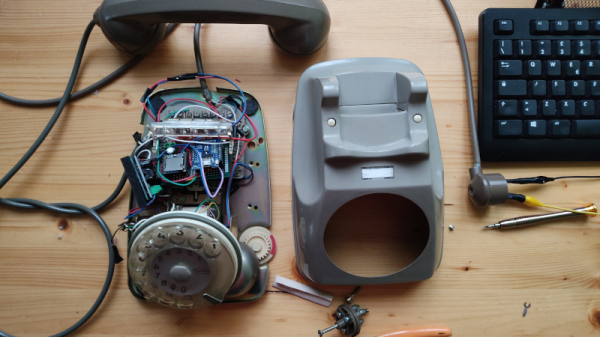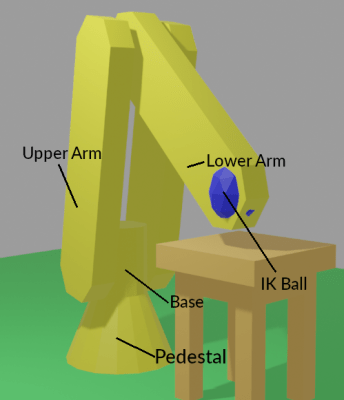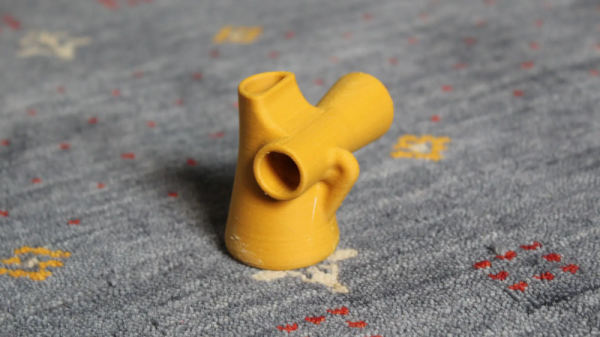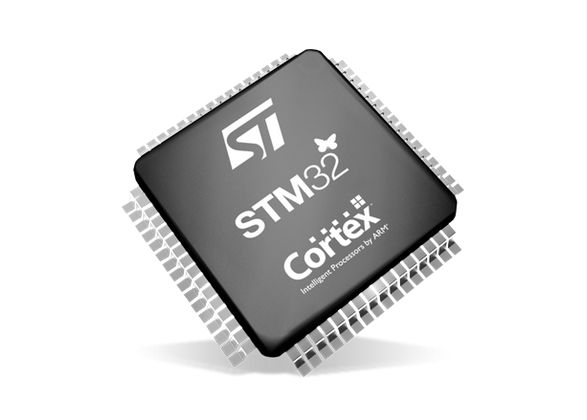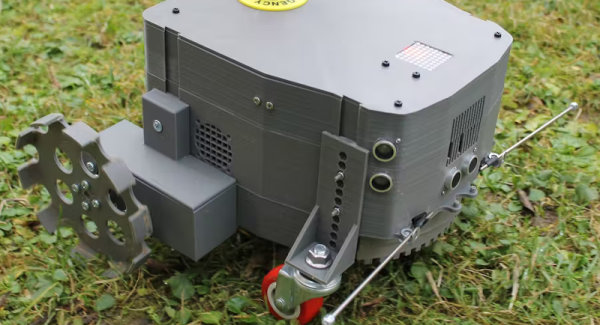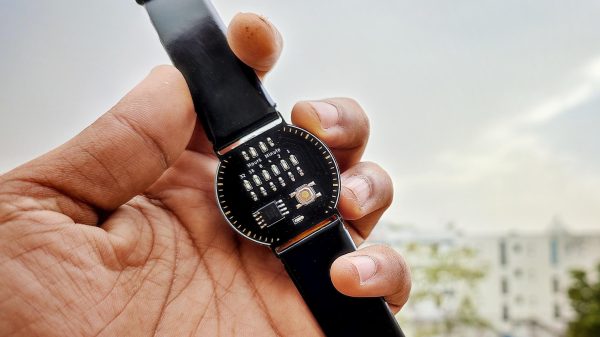Brrrrrrrring! Movies and TV are one thing, but the siren song of a rotary phone ringing in the same room as you is one of those sounds you carry forever. Not old enough to remember them? Ah, so what? There’s no reason to lose these beauties to the annals of time. In fact, we think more old phones should be repurposed so that present and future generations can experience the finger-hookin’ good time of the rotary dial and the high-voltage peal of those brass bells.
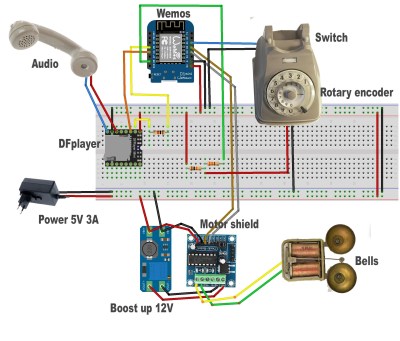 That’s exactly what [Giulio Pons] has done with Vintagephone — turned a rotary phone into a digital assistant with an analog interface. He’s reused all the good bits like the rotary dial, the bells, the handset, and the hang-up switch and connected them up to a Wemos ESP8266 development board with a mini motor driver shield and a voltage booster to ring the bells.
That’s exactly what [Giulio Pons] has done with Vintagephone — turned a rotary phone into a digital assistant with an analog interface. He’s reused all the good bits like the rotary dial, the bells, the handset, and the hang-up switch and connected them up to a Wemos ESP8266 development board with a mini motor driver shield and a voltage booster to ring the bells.
When it’s all said and done, [Giulio] will be able to set an alarm by dialing in the time, ring a number to get the current time and date, and ring another number to get the weather forecast. Reminds us of our childhood pastime of calling Time and Temperature to get outside verification that time had, in fact, passed inside the house on those boring rainy days.
Follow along with [Giulio] as the Vintagephone comes to life in the logs, which already have some great instructions for doing a similar number to an old phone you may have lying around. You can find the code on GitHub.
Got some old tech lying around? Teach it some new tricks and enter the Reuse, Recycle, Revamp round of the 2022 Hackaday Prize!

